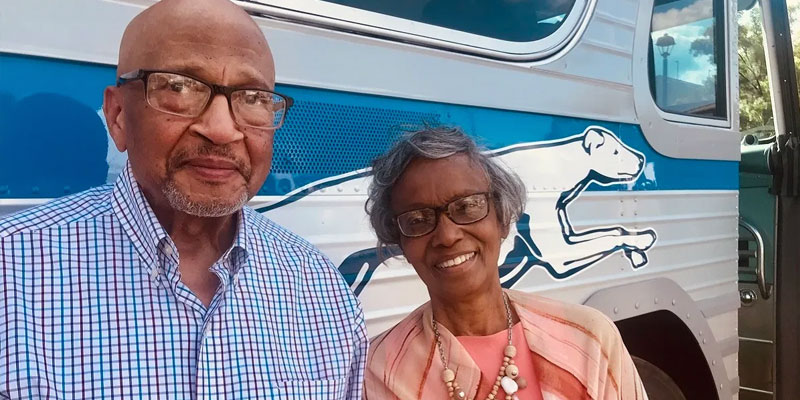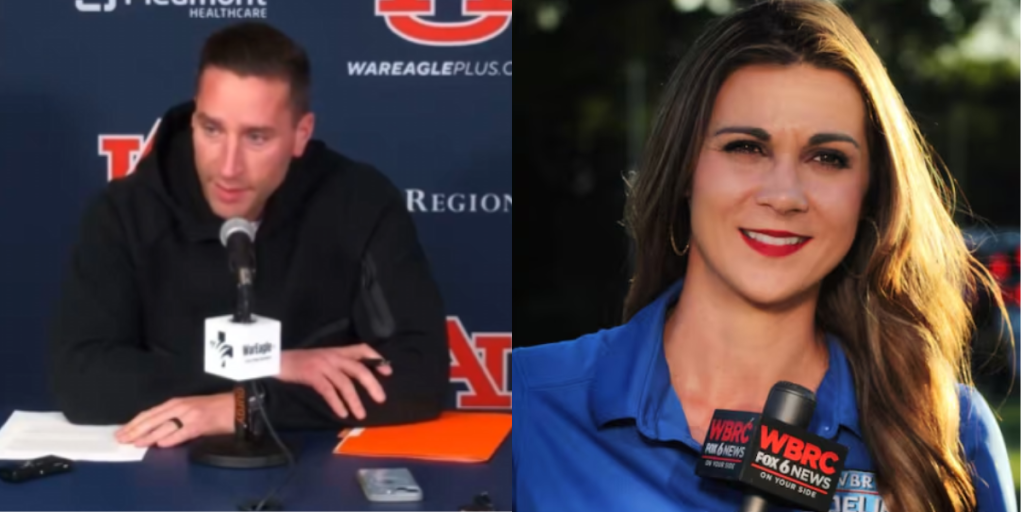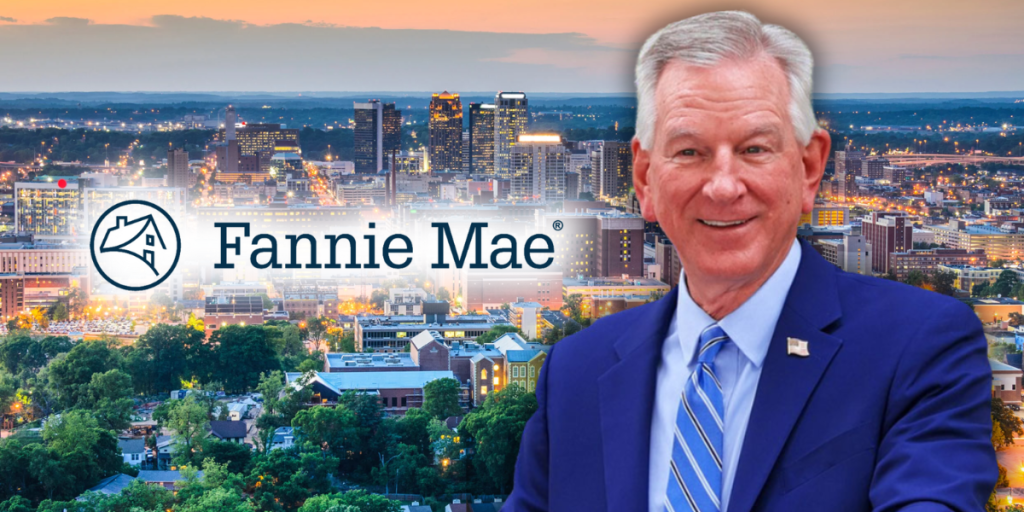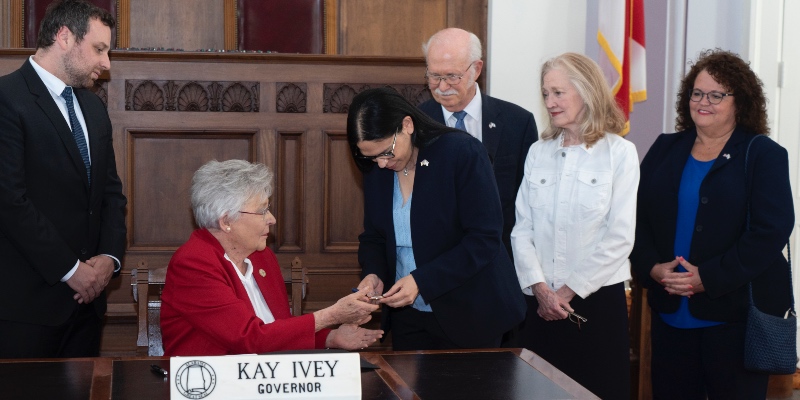Two Birmingham natives who participated 60 years ago in the historic Freedom Rides told their stories to an inquisitive and admiring crowd Wednesday evening at the Birmingham Public Library.
Catherine Burks-Brooks and the Rev. Clyde L. Carter weren’t on the first two buses that left Washington, D.C., on May 4, 1961, that were attacked by pro-segregation mobs in Anniston and Birmingham. Rather, they were part of the subsequent wave of young blacks and whites who continued the rides on interstate buses later that month and through the summer of 1961 with the goal of permanently crushing segregated public transportation in the South.
Sixty years later, Burks-Brooks and Carter appeared side by side Wednesday in front of a vintage Greyhound bus dating from the early 1960s – one similar to those boarded by the Freedom Riders. The bus, recently refurbished by the Alabama Historical Commission, has been traveling the state to commemorate the 60th anniversary of the Freedom Rides. Birmingham was the last stop for the bus before it returned to the Freedom Rides Museum in Montgomery, where it will become part of the facility’s interactive exhibits.
“That we were making history really never crossed my mind,” said Carter, 90, former pastor of Westminster Presbyterian Church in the Titusville neighborhood of Birmingham. Carter was attending Johnson C. Smith College in Charlotte, North Carolina, following service in the Navy, when the attack on the first buses took place in Alabama. A classmate convinced Carter they needed to get involved, and the two joined a bus in Charlotte that traveled to Atlanta and then to Montgomery, where they were arrested, along with civil rights pioneer Ralph Abernathy, for attempting to integrate the bus station’s lunch counter. Carter spent a week in the city jail before boarding another Freedom Ride that ended peacefully in Jackson, Mississippi.
Burks-Brooks, meanwhile, was among a group of young activists attending colleges in Nashville who raced to Birmingham to keep the Freedom Rides going after the first group of Riders were savagely beaten at the Trailways bus station downtown. Among those studying in Nashville – and one of the original 13 Freedom Riders – was a young John Lewis, who was attacked by police and state troopers on the Edmund Pettus Bridge in Selma in 1965 and later became a congressman from Georgia.
When the Nashville group arrived in Birmingham, they were immediately arrested by the city’s public safety commissioner, Eugene “Bull” Connor. That night, Burks-Brooks, Lewis and other riders from Nashville were taken on a long ride north with Connor to the town of Ardmore, Alabama, on the Tennessee line, where they were dumped on the side of the road. Connor expected the group to retreat to Nashville. Instead they immediately returned to Birmingham to continue the rides.
Burks-Brooks eventually traveled on to Montgomery on a bus that was attacked at the city’s Greyhound station – now the site of the Freedom Rides Museum – before journeying on to Jackson, Mississippi, where she and other Freedom Riders spent weeks behind bars.
“People ask me, did I know the danger? I knew the danger – all my life,” Burks-Brooks said, recounting her childhood when she had to “step aside” with her mother when passing whites on the sidewalks of downtown Birmingham.
“I had stepped aside all my life,” Burks-Brooks said, until her anger and frustration as a teenager evolved into intention – to do what she could to shatter segregation.
For Carter, his moment of revelation came almost a decade before the Freedom Rides, he said. After going through Navy basic training in San Diego, he was traveling on a bus with white seamen through Texas in 1952 when the group stopped to eat at a restaurant. As soon as he entered and sat down, a waitress approached and told him she could not serve him and that he had to leave. He returned to the bus, seething. “At that moment, a spark was lit. It never left me.”
That moment returned to him as he considered whether to join the Freedom Riders as a college student. There was no question what he would do. “All we wanted was equal treatment on the buses,” Carter said.
By the fall of 1961, the Freedom Rides nudged President John F. Kennedy to petition the federal Interstate Commerce Commission to ban segregation on interstate bus travel. A year earlier, a Supreme Court ruling had essentially established the same, but Southern states ignored the ruling, prompting the Freedom Rides. The segregated signs finally tumbled in interstate bus stations, and in station bathrooms and restaurants. Three years later, in 1964, the federal Civil Rights Act banned segregation in all public spaces.
Standing in front of the refurbished Greyhound bus Wednesday evening, in front of an appreciative crowd of adults, teens and children, Carter said, “Today, when I look at my children and grandchildren, I’m glad to see them enjoying the things I could not enjoy.
“Sixty years ago, Black lives mattered,” Carter said. “They mattered then – and Black lives matter today.”
(Courtesy of Alabama NewsCenter)













